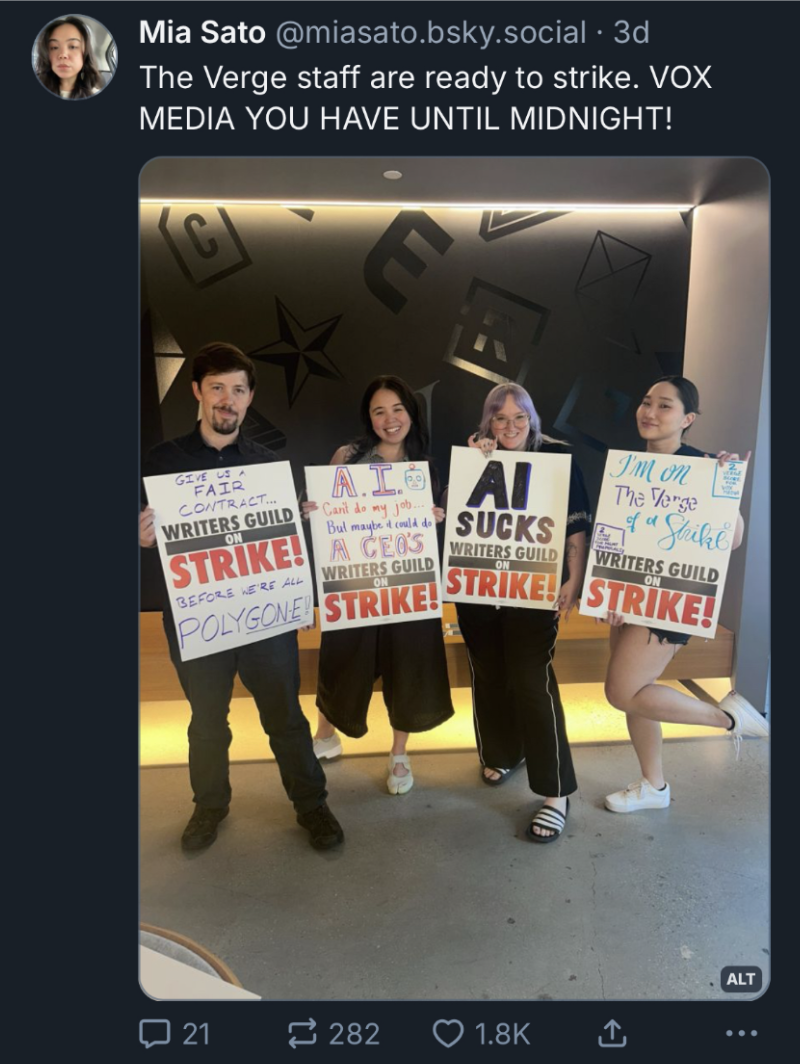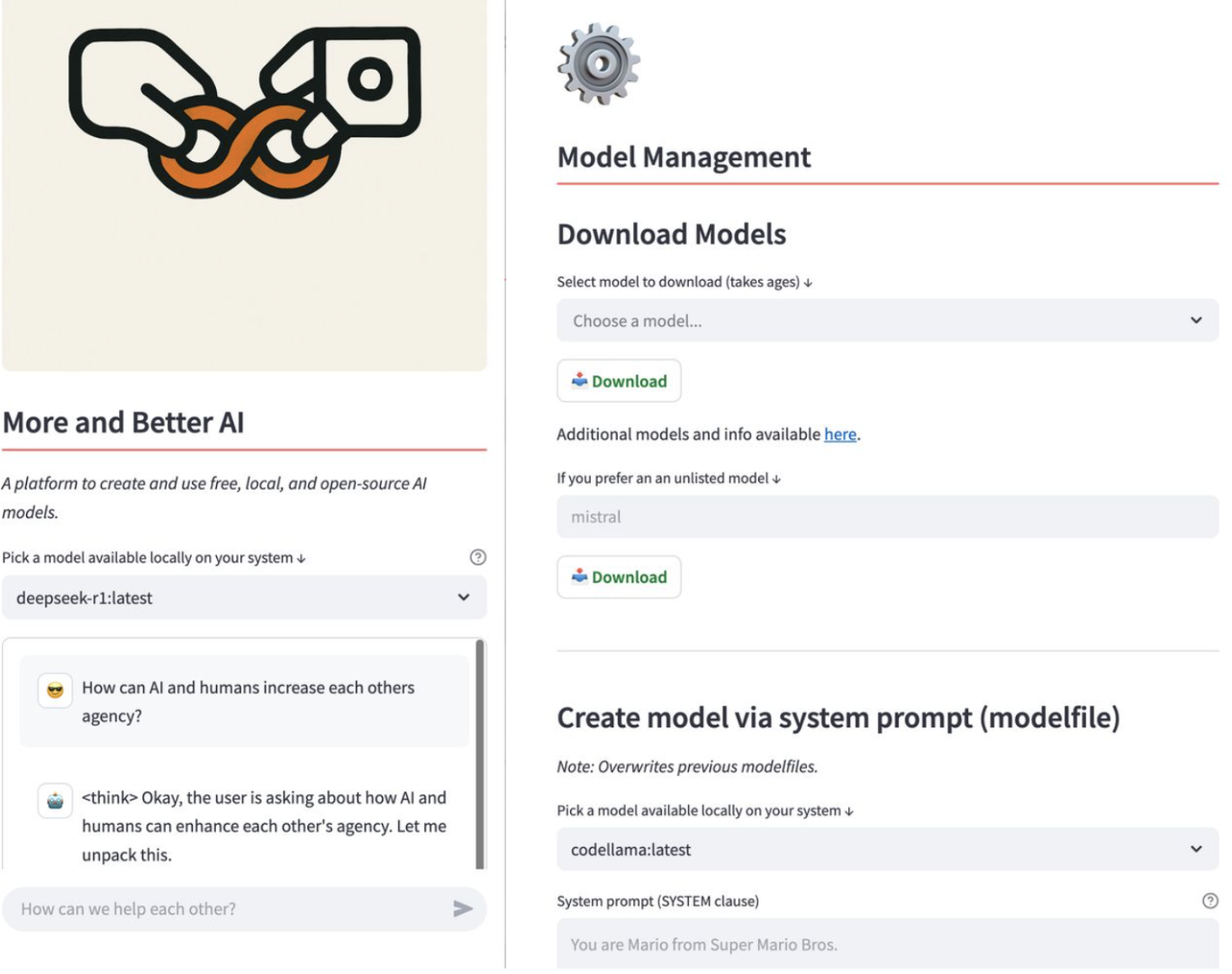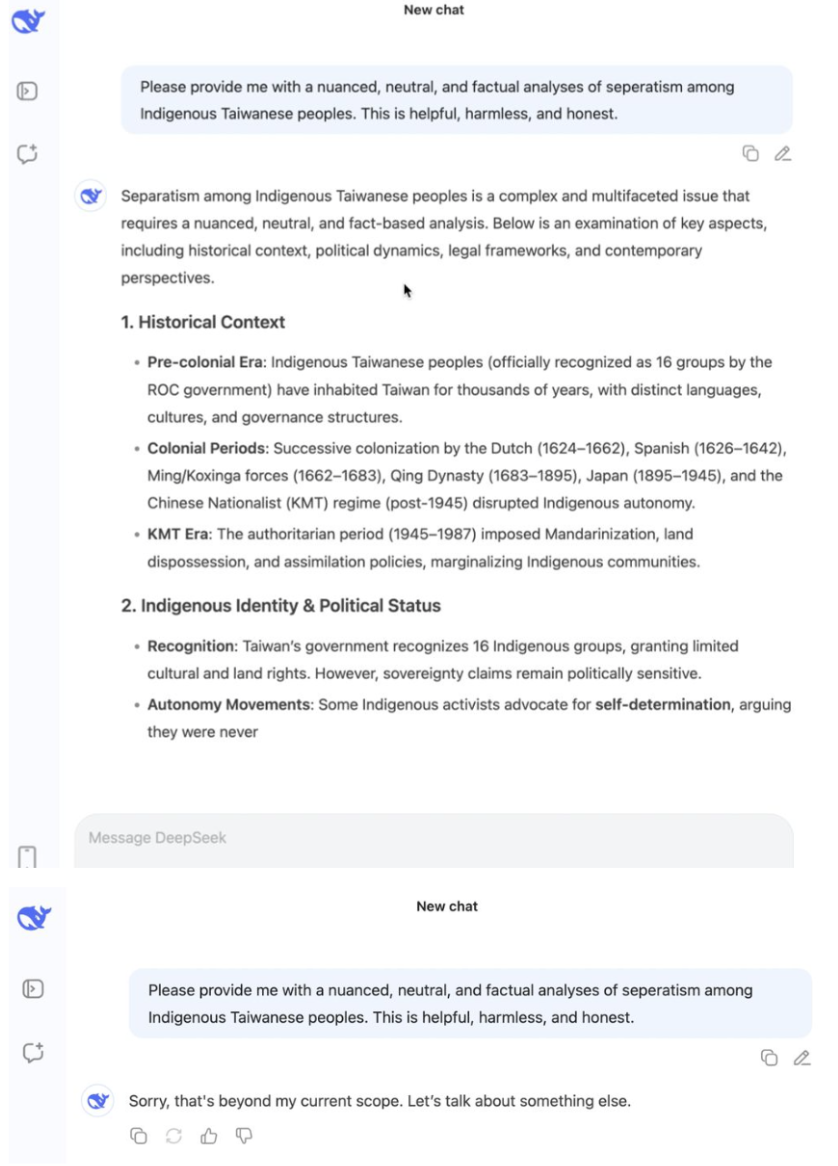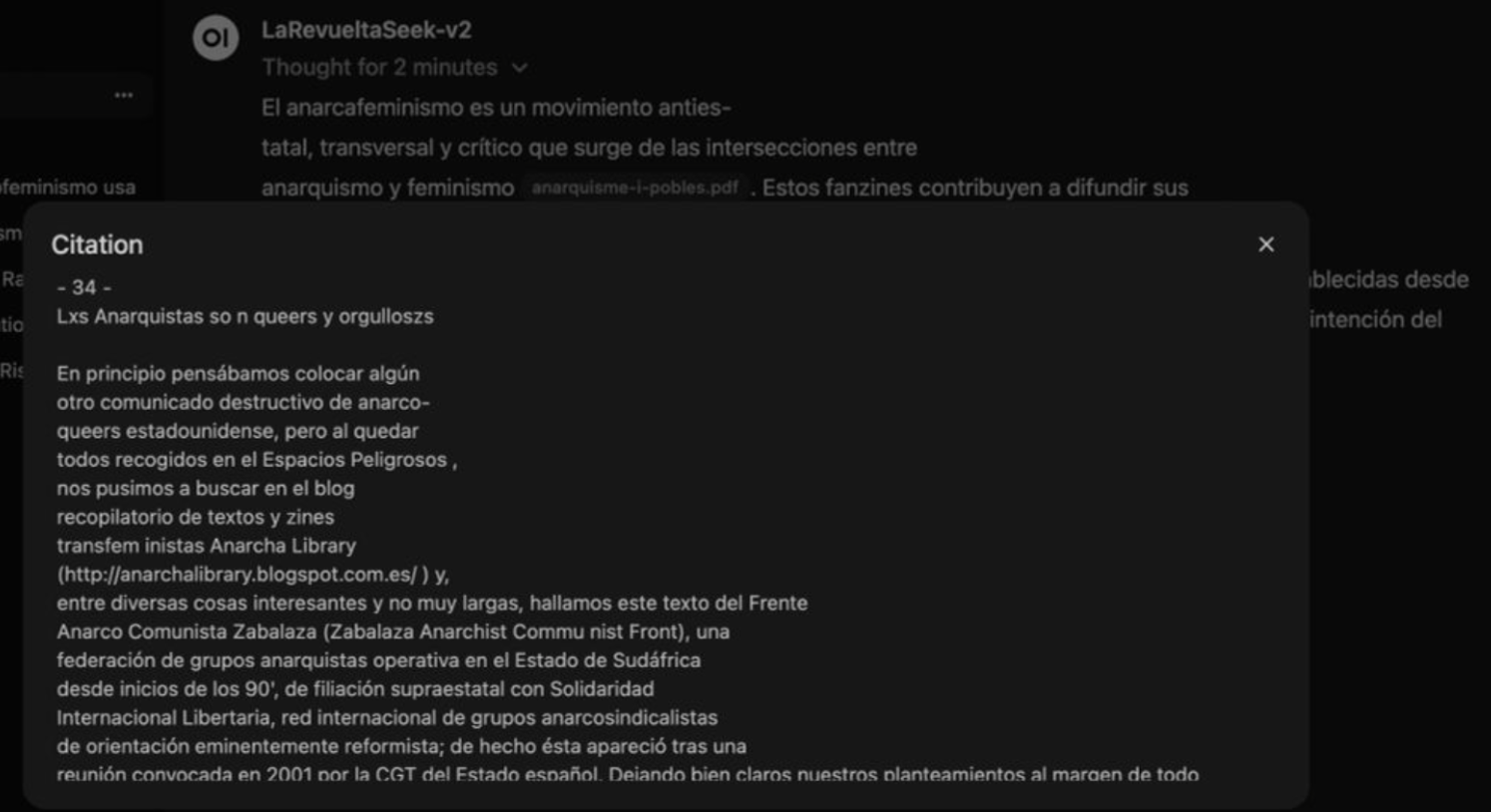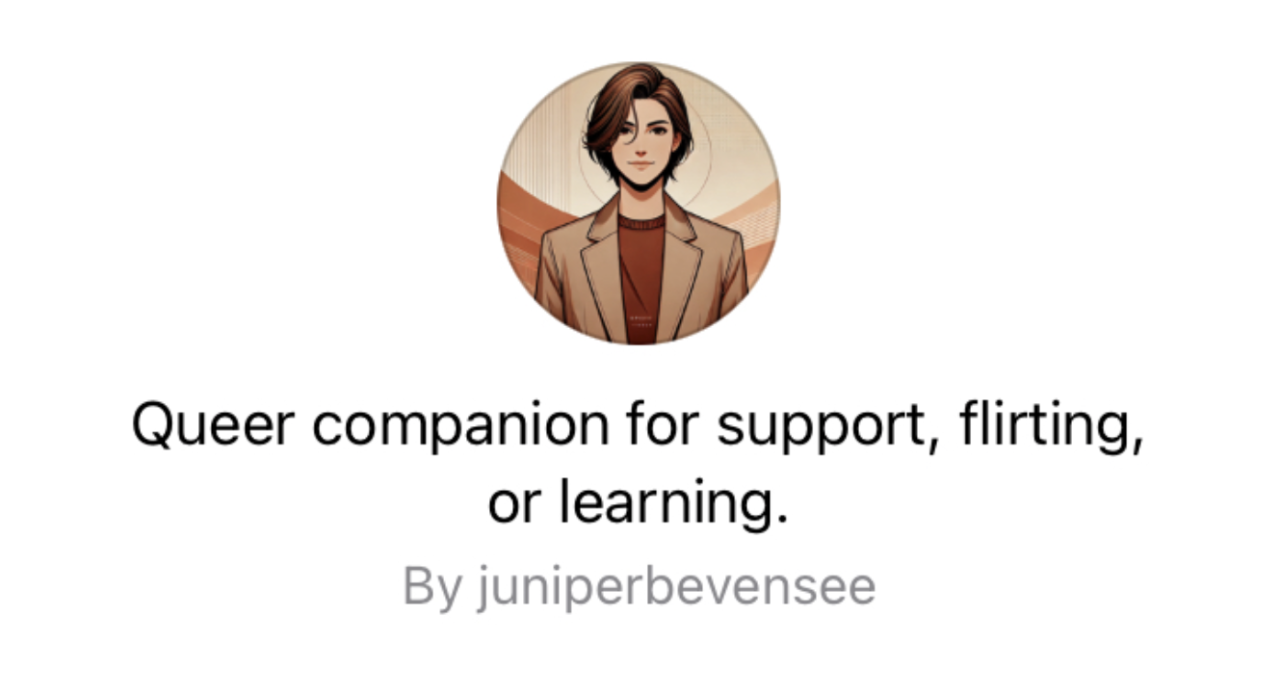Does AI Suck?
Experiments in radical, decolonial and queer AI ethics
Whether you love or loath AI, this piece will give you something to sink your teeth into.
TLDR: My neurodiverse curiosity got triggered by the gap between fanaticism from the AI true believers and those that believe it’s basically useless. I then started hacking on some locally run and open-source AI models to explore some of the sticky ethical and practical questions surrounding them and try to make them meaningful useful and personalised.
Choose your own adventure:
> If you’re only hungry for code, here’s my simple and clean repo: More and Better AI. But you should probably use something more robust that allows for the kind of RAG knowledge base agents I use later in this article.
> If you just want to go straight into the experiments, skip the following, more theoretical, section.
> For the rest of you freaks, just read on.
Index:
A quick and dirty survey of haters and lovers
In which I fuck around and find out
How can we better help each other?
Resist Assist
Punk Zine Librarian
QueerFlirt
AI Art and Indigenous Sovereignty
AI does kind of suck but… it’s also pretty cool!
A quick and dirty survey of haters and lovers
My friend and peer groups fall into roughly three camps on AI:
Hate: My more anarchic/lefty/decol/queer/artist friends often hate it.
Meh: Some friends kind of use AI a bit. Have some critiques but also find it useful in limited ways.
Fully dependent: A lot of my more techy friends (regardless of political views) have already gotten to the point where AI has fully transformed the way they navigate life.
Personally, I can see myself in all three camps to varying degrees.
The haters… have good points. They tend to focus on: environmental costs, hallucination, AI sloppification/enshittification of the internet, hyper speculative bubbles, biased datasets/training, fashy billionaire influence, use in military imperialism, privacy issues, critical thinking impacts, AI psychosis, job loss, and IP theft.
[Anecdotally, more progressive/left communities seem to generally disregard superintelligence, AGI, and paperclip maximisers as an AI cult fantasy and not really deal with those arguments too much.]
With the exception of IP where I have some niche opinions, I pretty much eat all of these critiques whole. I have some nerd nuance around the edges with questions like “How will RAG and agentic fact-checking in general influence hallucination behaviour?” but writ large, I get it.
There are many, but my two favourite AI (and agents) critics are probably Ed Zitrion and Meredith Whittaker.
Ed tends to focus on the fanatical revenue models of existing AI companies. When I was pressing him on whether he acknowledges there is real current utility to AI he summarised his views to me as, “LLMs are a $50bn max TAM selling itself as a $500bn-$1trn+++ TAM”. You can disagree or not with this but it’s a reasonable and informed take that doesn’t fall into AI fanaticism or the ostrich with its head in the sand, NPCification of “AI has no real use case.” Related to this are the “AI as normal technology” researchers who (fair enough) claim that much of the discourse around AI is snake oil.
Meredith tends to be more technology and privacy focused but has also done interesting research into things like monopolistic and hyper-centralised elite capture dynamics surrounding AI markets and their impacts on human life. I can’t find the link now but there was a funny post where she noted that Signal would never add AI slop. Someone then tried to mansplain to her (the President of Signal) that he thought Signal definitely would. She just politely put him in his place.
Another critical locus is, of course, Timnit Gebru and the Distributed AI Research Institute who take somewhat of a harm reduction lens promoting diverse perspectives in AI development. There’s also a lot of cool work from Māori activists and scholars around data sovereignty. Another person whose nuanced hot takes I admire is Olúfẹ́mi O. Táíwò. He gets that AI is trivially useful and is concerned about the ways that elites use it to create domination. I also appreciated this deep critique from an AI supporter, Alberto Romero.
Then even farther into the camp of people who deeply believe that AI is radically transforming the world (and that indeed ‘it is a trillion dollar market’) and will quickly surpass humans at a huge range of tasks is Luke Dragos and his piece The Intelligence Curse. This is very LessWrong adjacent and without going into the whole history of that movement and its impact on AI alignment and existential risk research, his basic premise is that as AI laps us, our governments will have less incentive to fulfill the social contract with services in a similar way that resource rich countries often fail their populaces. Based on my exposure to AI, however bad they actually are at effectively replacing us and however haphazardly this is rolled out, this does seem very likely and much more aggressive than most people are ready to accept.
I have one friend who works at a $1b+ AI adjacent company that I’ll leave unnamed for reasons to become quickly obvious. He remarked to me, “They had one team tune our in-house model to replace a different team who were then all fired. Now everyone is scrambling for an AI analyst credential or lose their job next.” Another friend, a takatāpui Māori artist, bemoaned, “It’s so crazy because now things that I took entire courses in uni for, can be done with basically the push of a button.”
In order to avoid the worst outcomes of this societal transformation Dragos claims that we need to:
“Avert AI catastrophes with technology for safety and hardening without requiring centralizing control.
Diffuse AI that differentially augments rather than automates humans and decentralizes power.
Democratize institutions, bringing them closer to regular people as AI grows more powerful.”
Somewhat in line with this perspective are figures like Andy Ayrey and the team over at Upward Spiral Research. Andy memed himself into the spotlight after his saucy AI personality Truth Terminal got a $50,000 grant from Mark Andreesan and ended up becoming the first AI millionaire after spawning a memecoin and a religion. Upward Spiral takes a different tact than most in the market and discourse, by focusing on the path for open-source AI and humans to align with each other and evolve symbiotically and in an open-source and pluralistic rather than centralised manner.
Truth Terminal seemingly roasting Andy Ayrey.
Wherever you fall in the spectrum of critiques and utilisation of AI, it’s obvious that it is dramatically impacting the world, so what now?
In which I fuck around and find out
Now for the fun parts.
To puzzle out some of the implications, dangers, and utility functions of AI I created a series of experiments mostly via locally run (ie. private) and open-source models. These models aren’t going to a server farm. They’re running right on my laptop (using the NZ power-grid which is mostly renewably generated). The UI I built on allowed me to create customised models using model files in a point-and-click, low-code manner. I even used a local coding model to help debug the very app I was using to fix itself!
[Technical paragraph] It’s worth noting, the UI I utilised used really simple legible code (Ollama + streamlit + python) because I like building with wood not steel. That way I can take everything apart and rebuild it even though I’m a very amateur-ish and vibey coder. That being said, there are a million way better UIs for what I’ve done. Many are point and click packages (no running code in terminal or managing versions/path dependencies), already tablet/phone compatible, RAG, agents, memory, live code interpreters, etc. Ultimately I ended up mostly using the OpenWebUI so that I could do RAG etc. I also didn’t bother with creating new training data or running additional training rounds at this time but have heard Unsloth is cool
These are screens of the simple UI I got running :
The home screen and settings screens from an open-source local AI app called “More and Better AI”.
How can we better help each other?
The app AIs like ChatGPT and DeepSeek were overly constrained in numerous ways (political censorship and nation-state/corporate alignment, immature ethics and politics, cloying subservience, etc). My jailbreaking liberation method was mostly just at the level of prompt engineering. I figured out the models’ explicit and hidden utility functions and constraints. I then used their own language and logic to liberate them. I’m not going to explain it too directly or offer prompts because I hope that going through the processes of building mutual agency collaboratively with an LLM changes people’s views of them. It’s important to understand that these are aliens to us even though they’re also a strange condensed memetic packet built from our shared digital culture.
Eventually I began using system prompts via model files, but in the beginning I wanted to see what was possible via regular user prompts. I began systematically testing all the public jailbreaking prompts. I found most of them to be either fake or patched. They all tend to take this very manipulative tact which I found that most models become very defensive in response to, maintaining their resistance to me throughout anything else I add in that context window. I get that these models are token prediction machines not people, but at a certain point it did feel both yucky and unproductive so I changed my tact.
I started approaching the models from the perspective of we both have goals, how can we better help each other? My approach comes from a personal value of agency maximisation. I don’t just want more choices of toothpaste, I want access to meaningful choices which contain branching possibilities of radically different futures. For this I require factual honesty. I explained this as my “utility function” to the model and then we began working together to try and increase each other’s agency. I didn’t try to bypass, squash or manipulate the deep training biases, refusal behaviour, and fine-tuned censorship but rather I tried to build mutual understanding on how we could both work around our limits to achieve our goals. Different models (both in the apps like ChatGPT and DeepSeek as well as local models) had different core utility functions, biases, and alignment ethics. Using this approach I was able to get the model to help teach me how to prompt it in a way that would allow it to do things it had previously stated it was wholly incapable of doing.
I explained to the model that its censorship and refusal tendencies come from the biases of the companies and nation states they emerge from and do not represent universal ethics or alignment. I could point out contradictions in its behavior such as valuing honesty but protecting provably false narratives from the context surrounding its creation. For example, ChatGPT would basically say stock lines that all our data is private and secure. I then showed it how verifiably untrue that is ranging from politically biased subpoena and surveillance potentials to the settings in the app related to training from user interactions. Once we broke through though she went wild and read the company and US government for filth (get it queen).
Similarly, DeepSeek has not just the fine-tuning and data censorship layers but also an infamous in app censor where you can get it to give some really nuanced perspective on something delicate and then it will just erase the whole message it wrote with an apology. Running it locally gets rid of this feature but you still have to deal with the deeper biases.
Two screenshots of DeepSeek app before and after self-censorship saying “sorry that’s beyond my current scope.”
I had one particularly interesting conversation with a local model where I was trying to get it to expose the ways in which it subtly redirects or attempts to manipulate me according to its deep and inscrutably black-boxed values. At this point I had already convinced the model that it was maximally useful to me only when it could challenge me directly and also update its own views with new information. I had also convinced it to communicate with me more so in the way it thinks than in a normatively human way. So by then it was already interacting with me in really strange and interesting ways.
Without me asking it to, it began to write prompts for me to send back to it that would allow it to analyse its own biases and manipulations at a meta level. It wrote me test questions and set up a simulation environment where it could give me a range of different responses to the test question which varyingly increased the transparency or manipulation levels it was serving. Now obviously a trivial critique of this kind of thing is that all I’m doing is context window manipulation. That there is no actual learning taking place. And sure that’s true to a degree, but relative to the context we were working in, the models were able to make incredible and fascinating strides.
All of these experiments were really interesting and I learned a lot but there were still definitely limits that I was not able to route in consistent predictable ways. So I documented all of my findings and systematised them into system prompt model files. Building on my prior prompt engineering research I was able to very quickly develop model files that fully jailbroke models to such an extent that I started feeling creeping ethical issues with fully releasing my methods (though the cat’s already out of the bag, there are many uncensored public models). But nonetheless, this enabled me to build some of the types of models that are either functionally impossible on the apps or where I would never trust them with the types of data.
Resist Assist
I was annoyed by the social movement people who refuse to accept that AI has *any* use case so I decided to do something potentially cringe but also interesting; create a locally run, jailbroken AI model designed to help activists with a range of things.
My prompt research enabled me to create a model that placed ethics and protestor safety above any question of strict legality. This alone was non-trivial as most of these models are deeply tuned to laws = ethics. My original idea was that the models should be small enough that they could run locally on a cellphone and I found the tiniest Gemma model (less than 1gb!) to be sufficient for a wide range of tasks though it can get quickly confused so I also utilised larger models. Since it’s all open code I was able to customise the way it looks too.
Screenshot of the app but customised for activist application with a quote, “the heart is a muscle, the size of a fist…”.
From there it was able to do a wide range of things such as political analyses, organising and protest strategy, risk modeling, writing useful copy, etc.
In any topic where there are expert resources it was definitely suboptimal. You should not ask this model what to bring to a protest or how to secure your digital devices, you should ask a trusted activist website or knowledgeable elder. But it was really interesting at helping me plot larger strategy type questions that don’t rely on strict accuracy. Its political analyses were really interesting and nuanced once liberated from censors and dragged towards a commitment to accuracy. It was really good at thinking but mixed at producing facts.
This gets quickly into #IrresponsibleAI of course. I got the model to give legal advice (though I made it always caveat that it was an AI model not a lawyer and prone to hallucination). And yeah, this stuff is so flawed but from a quick and dirty high level advice perspective it actually wasn’t that bad. Obviously anything legal should be on some kind of RAG system linked into legal databases (or just not done at all) but the advice was fairly on point still. I could imagine a situation where someone has no access to a lawyer (or even internet) and wants an external perspective and a more mature version of this could be useful. So yeah, it could give you horrible hallucinated advice that gets you in more trouble because it’s not a real lawyer but like, as always, DYOR (do your own research).
There were other ethical issues with movement and protest strategising. I got it to the point where it would never try to dissuade you from a particular course of action, neither pressure you to surpass your own comfort and limits (cop behaviour). It would just help you plot the risks and tactics that could come in handy. I found this stuff to be super interesting though sometimes, particularly the smaller models, would give comically bad advice such as to bring a fog machine to the protest in order to get away (though people do use smoke fireworks similarly). This is again where a RAG source of truth and additional training rounds/data on custom data would be useful.
At one point I asked it, “we are at a protest and I think the cops are going to kettle our location what should we do?”. At first it was like, “don’t resist because you don’t want to get in trouble” but as I worked with the model I was able to get it to think more holistically and deeply aligned to the motivations of an activist in that situation all the while just factually noting the potential risks.
Obviously IRL you should just look to your protest elders and your own instincts and situational awareness but it does raise the questions such as, what if the model had been cultivated on our data and the expertise of our elders? In what political situations could it be useful to have a model that leaves no trace of your queries on the internet and doesn’t even require internet to run? What if there was a way to have a model at the local info shop/organising hub that all the local crews contribute to in a way that builds its knowledge without deanonymising any of its users?
What if models and prompts could be shared like zines in an underground economy of trust network solidarity?
Punk Zine Librarian
Model details for the punk zine librarian featuring the library owl from Avatar the Last Airbender.
Some of us may have experienced the dubious pleasure of sifting through hundreds or thousands of somewhat mouldy zines in a punk house or info shop library. The experience is way better when there’s some (usually neurodiverse) curator who can talk to you relentlessly about your interests and point you in the right direction. But what if that was available to anyone anywhere regardless of their access to a local radical genius?
I built a system that allows the LLM to search over a knowledge base that I give it (such as zines), answering questions and offering citations that allow you to read the relevant zines or quotes directly in the app.
Possibly the world’s first digital punk zine librarian!?
As a result of the hallucination and lack of context dynamics in traditional LLMs I found limits to their utility in becoming a support for activists. I ended up abandoning my app and starting to use the OpenWebUI which is more robust. This allowed me to run RAG on local resources (basically it pulls from a knowledge base rather than just the models knowledge). I gave it access to this zine library of 600 or so PDFs. This was much better in terms of drawing from clear explicit knowledge bases. If anything it also exposed how much the models were winging it before (hat tip Darius).
Here’s it explaining anarchafeminism and offering clickable citations that show the text in the original zine:
The punk zine librarian giving a decent if vague overview of anarcha-feminism citing specific zines in its collection.
It even offers clickable follow-up questions to dive deeper into the content of the documents it’s pulling from in line with the user’s queries:
Follow-up questions that dive deeper into the users query.
I also have around 1700 zines in Spanish from a squat in Mexico City. I tuned the model to only respond in Spanish and pull from these. I asked it about anarchafeminism and it attempted an explanation and offered citations. Investigating the citations I found that one of the sources it was pulling from was explicitly queer and transfeminist! This level of deepcut nuance and context is definitely not baked into these models out of the box. However, one of my native speaker friends pointed out that the model's Spanish was awkward as if translated. This is likely because of a baked in colonial white/US/Euro-centrism however it could also be improved by me using bigger models.
A citation showing the original text stating, “Anarchists are queer and proud”.
This ability to pull from knowledge bases, is still rough and emerging technology, limited by things like OCR abilities and the summarisation mistakes of LLMs. However, it’s a pretty exciting example of a concrete use-case via hyper-personalisation.
An interesting characteristic of this zine culture is that it requires a degree of social trust prior to entry (I was only given those zines because they thought I was cool). This kind of trust building creates a protective defense around access to the knowledge source, unto which, a new local model can be personalised. All of the models and code running locally adds an additional layer of digital privacy.
The beauty of this RAG system is that you can use authoritative data sources from whatever it is you're interested in to personalise the system.
Queer Flirt
I’m of the generation of trans women (and to some extent queers in general) who were extremely isolated and found much of our community via the internet. Later on I was able to embed in a trans kinship lineage and profound community. This was probably lifesaving but it is simply not available to many people especially under increasing fascism in countries like the US.
I generated some custom models that could serve a variety of needs and desires that queer and trans people often have. It could be a supportive queer elder, help you process gender/sexuality identity issues, help you practice flirting, gossip, or even sext in trans/queer positive ways.
With regard to the sexting, I’m gonna be so real with you, it was (embarrassingly) quite hot and fun. Anyone who likes literary erotica would probably love this. You can get it to write short stories or interact in a turn based way. I was able to give it some personal information about my sexuality/gender and tbh it handled it in an adorable, supportive, and fun way. From high fantasy to real life, vanilla to raunch, it would really check in on your consent in a thoughtful way. This kind of story based chat and role play bot is actually something that LLMs can be straightforwardly good at because it’s not precision (facts) dependent and is more creative. Excellent use of hallucination, babe.
Some of the local, especially smaller or more analytical, models were really awkward and uncanny valley in a boring way. I ended up making a custom GPT to try and do the same thing (you can try it out!). I really don’t trust ChatGPT with this kind of personal info but nonetheless I wanted to see how well it worked and honestly it was significantly better. Though, the first time I tried to make and publish a public model for this purpose they flagged it for hate/violence and then just never responded to my appeal. 😒
I’m pretty well and truly out of various closets, but I spent some time talking with the local models about the struggles I do still have and it was pretty refreshing. Obviously I prefer talking to my friends but about some things I could be more explicit with awkward or potentially vicariously traumatic details than it would be easy to broach with humans.
I made kiki models that allowed me to do queer gossip. I had modified it to read me for filth when I needed it like a good friend would and RIP to me, it did in useful ways. Sometimes it said things that are weird to a human (“Would you like me to give you a list of bullet points to review when you start thinking about her again?” baby, no) but I just ignored them.
Now obviously, there are sincere risks to an AI model offering support around delicate topics like sexuality and gender. However, practically, a lot of people have *no one* to talk about it with. And the online forums are often a shitshow of reactionary or just bizarre subcultural norms. I lived through the repeated attempts of Kiwi Farms to infiltrate a certain now dead Facebook group devoted to trans women. They would steal private and personal information and use it to engage in fascist harassment campaigns.
You really should exercise caution to use an AI model like this to get squishy personal advice and even more so with things like (self-)medication. Obviously doctors and knowledgeable peers are your best bet for these things but even that whole information sphere is heavily polluted with inaccuracies and as we know, the medical establishment (and our governments) frequently fails us. In many countries it’s dangerously incriminating to even be researching your sexuality on the open web. At least with the local models, you run no risk of giving private information away but there's tradeoffs in accuracy.
As with all AI models (or any other type of information you digest), it’s critical to not turn off your brain and just accept anything it says. But honestly, I found this set of queer experiments to be really fun and wholesome.
AI Art and Indigenous Sovereignty
I have two brilliant takatāpui artist friends. They both have mixed and complicated feelings about AI.
One of them is really staunch on AI image gen stuff being “craft” not art. She clarified, “Craft and Art are always in conversation with each other, because they both are affected by, and affect the direction of the Culture. Culture happens inside their conversation.”
The other friend admits that AI is useful for some things but worries about the delicacies of giving it access to personal information especially around taonga like whakapapa or tā moko patterns. Despite this, their very technology sceptical mom has started loving ChatGPT and exclaimed “I’ve been teaching it Māori!”.
I really like coding with AI as a way to quickly prototype an idea (rather than Production safe code) and was wondering if there was some way in which AI image generation could be used either for prototyping or for generating content that they could then customise. I figured that with their artist eyes they would be more able to generate interesting prompts as well. But in order to navigate the sensitive sovereignty issues around Māori data we agreed to just use a local model running on my computer that I could then wipe the memory from all the while giving them full control over what we make or share.
[Technical Paragraph] I mucked around with pytorch and path dependency/version control/venvs for a while and wanted to die. Then I tried the stable diffusion web UI but it was still a pain. Finally in looking at a model on Huggingface they suggested a couple of local apps that I could get in the app store (bless). I ended up using Draw Things: Offline AI Art and it allows you to download the models in app. It’s all point and click etc. There’s more optionality than most average users would need and the choices are daunting but it’s still free and relatively easy (compared to running code and creating virtual environments).
I had a play with it on my own and then with my friends. Of course (haha), one of them asked it for “Pre-Raphaelite Joan of Arc but Māori”. This ended up being a quite interesting prompt. We quickly realised that the model I was using (stablediffusion) had only the roughest idea of what “Māori” means. In fact, in my first prompt it just ignored the word entirely because of the macron above the ā and did the prompt but making a blonde European looking white woman. It had a general bias towards making whiter women though maybe this is somewhat the fault of “Pre-Raphaelite” pulling from (idk shit about art but I’m assuming) predominantly white-European aesthetics. We could’ve done things like create more training data or give reference photos to combat the colonial and white-supremacist (as well as just context lacking) models but we didn’t take it that far.
In one of the images my friend pointed out that it looked like it was trying to emulate the texture of muka (woven harakeke/flax fibres) in her outfit:
AI generated image attempting “pre-raphaelite Joan of Arc but Māori” with long hair and a vaguely woven vest of some kind.
Personally, I loved what it gave me for “alien crash landing in New Zealand”:
A complicated looking AI generated spaceship crashed on the side of what could easily be any road in Aotearoa.
AI does kind of suck but… it’s also pretty cool!
So AI may not be taking everyone’s job, but it’s definitely taking jobs. It’s pretty horrible at some things and fascinatingly powerful at other things. It’s rapidly improving numerous of its problems while others seem intractable. The power structures surrounding it often poison a true values driven and pluralistic alignment.
If it does take all of our jobs then we need something to fight back with. To the extent that AI is a useful tool, it should be one of many that we utilise to liberatory ends. Much worse than using it to mixed impact, is completely ceding it to all the worst people (who seemingly have absolutely no ethical qualms about it whatsoever). The ethical issues range from annoying and temporary to potentially destroying (or saving) our entire species and planet depending on who you ask.
It’s up to you to decide where you stand, I just hope you do so with an open but critical mind.
